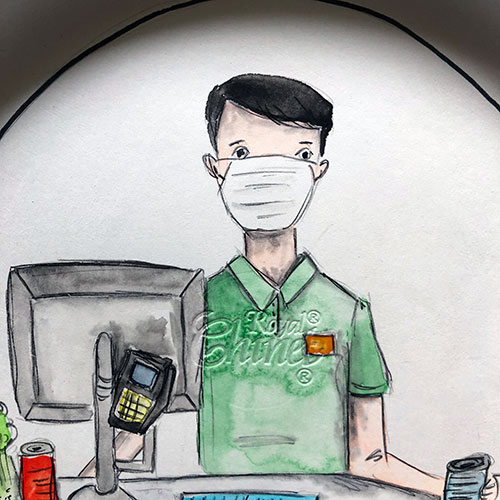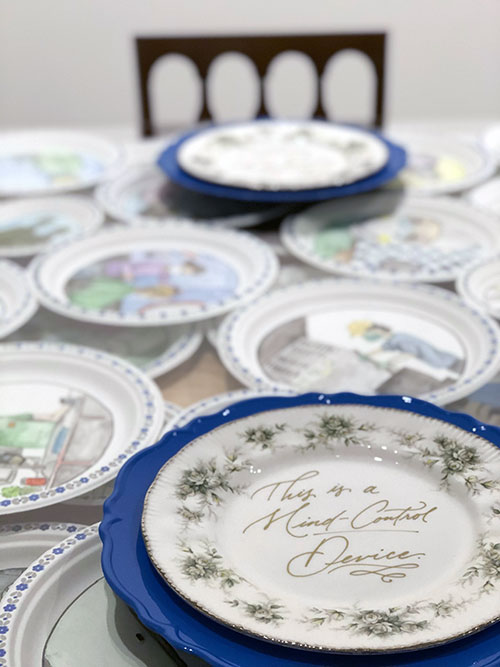Carole Epp's mixed-media sculpture highlights the divide of privilege during the pandemic. (3 minute read)

When Carole Epp was invited to participate in the borderLINE: 2020 Biennal of Contemporary Art at the Art Gallery of Alberta, she had plans to create a piece using a combination of handmade ceramic dishes and found object commercially made plates. She wanted to work with a company that could cut windows in the plates using a water jet, so they could be layered and show the ones behind them. “As soon as COVID happened, emails started falling apart with companies. I needed to test whether the handmade plates could withstand the water jet. But it became pretty clear, pretty fast, that it wasn’t going to be a possibility,” she says.
With the biennal coming up in September 2020, Epp had to switch gears quickly to reinvent the project. Responding to what was happening around the world with the pandemic made the most sense to her. “I remember worrying that it was too timely – that it wouldn’t be relevant in September,” she laughs.
The Saskatoon ceramic artist’s personal situation had changed as well; schools were closed due to the pandemic, and her children were now with her full-time. “With the kids being home, I hadn’t seen a ceramic studio since March,” she says. So alternative media would have to be employed. “I needed to be able to work on this beside them as they did their schoolwork.”
The resulting mixed-media sculpture consists of a dinner table built out of plywood and plexiglass. Sandwiched between the wood tabletop and a top layer of plexiglass are two layers of hand-painted paper plates, each a portrait of a frontline worker. On top of the plexiglass, the table is set with decorated fine porcelain dishes, each with quotes taken from Twitter comments of privileged demands for haircuts and calls for the end of social distancing and mask wearing.

“The work acknowledges the disparity between those with privilege and those without and how the pandemic highlights that divide through its treatment of frontline workers,” Epp notes. She received a Micro-Grant from SK Arts to cover the cost of production of the work and travel costs for its installation in Edmonton.
For the portraits of frontline workers, she specifically chose to paint on paper plates because of their disposability. “I was thinking about how we consume them – they are just there for one meal and then get chucked away. They are more fragile than the ceramics pieces that would be deemed breakable,” she remarks. “The piece looks at how we treat different people in society. If they were permanently instilled in a ceramic plate, it would have a very different feel to it than a disposable one.”
The portraits of workers are altered from photographs of real people. Epp set a timeline on how long she worked on each one. “I think about the time that we interact with these people – getting a coffee, delivering a box – these people who are so important in our lives, in our privileged bubbles. That idea played a part in how much time I spent on each painting.”
Epp looks at the “cutesy and fun” functional ceramic pieces she made previously and has difficulty imagining doing that kind of work right now. “There’s something really important about capturing history through art. We’ve got those emotional responses and things that permeate through culture. Art is important at times like this.”
Photos courtesy of the artist.
